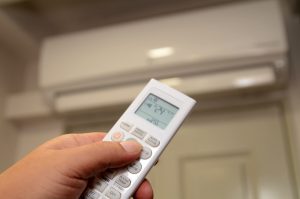
Tips On How To Choose An Air Conditioner For Your Office
 Air conditioners do more than just keep the air cool in the office. ACs also help maintain good indoor air quality and prevent the growth of molds and mildew that thrive in hot, humid environments. To find the right size and type of air conditioner for the office, use these tips.
Air conditioners do more than just keep the air cool in the office. ACs also help maintain good indoor air quality and prevent the growth of molds and mildew that thrive in hot, humid environments. To find the right size and type of air conditioner for the office, use these tips.
1. Determine the Correct Room Size.
Room size refers to the size of the enclosed space. The cooling capacity of the air conditioner that will be installed for the room will depend on the size of the room. A smaller room, for example, will require an air conditioner with a smaller capacity while a bigger space will require a higher-capacity AC or even multiple units to ensure that the room can be cooled sufficiently.
To find the correct air conditioner size, calculate the area of the room then multiply it by 25 BTU (British thermal unit). For example, if the size of the room is 10 feet by 15 feet, it would have an area of 150 square feet. Multiply this figure by 25 BTU. The result will be the minimum BTU for the AC unit that should be installed in that room. In this case, the minimum cooling capacity would be 3,750 BTU. Note that this is only the minimum figure since other factors will come into play. The actual cooling capacity required may be higher, considering that most offices have multiple occupants.
2. Consider the Number of People in the Room.
The number of people who will be using the room on a regular basis will also affect the choice of an air conditioner unit in terms of size, number, and capacity. Keep in mind that the more people who use the room, the higher the demand for cooling power. In most cases, the minimum BTU for a room is usually enough to meet the cooling needs of about five people. A higher BTU will be required for a room with more occupants.
Do not think that setting the air conditioner on high to make up for its low cooling capacity will fix the problem. This may keep the room cool but it will only do so temporarily. To maintain a comfortable temperature, the air conditioner will have to work harder to sustain the conditions indoors. This extra burden will cause the motor to overwork, increasing the risk of wear-and-tear to the system.
3. Look for a High-Efficiency Unit.
Energy efficiency in most appliances are measured by their EER or energy efficiency ratio. This is the relation of the cooling capacity (measured in BTU) to the input of power (measured in watts). An air conditioning unit that has a higher EER rating is more efficient than one that has a lower rating. Always look for a unit with a higher rating since this will offer more in terms of long-term savings.
4. Consider the Space.
There are several types of air conditioners that may be used in the office. The most common types include window ACs, split-type, multi-split, central AC units, and portable ACs. Portable AC and window ACs tend to take up space. Window ACs, for example, often require drilling through a wall to make space for the unit itself. If office space is limited, consider types such as central ACs and ductless splits or multi-split systems that are not only easier to install, they also do not take up a lot of room. This will help free up more work space.
5. Work With a Licensed HVAC Contractor.
Office cooling and heating requirements must only be handled by an experienced and licensed AC contractor. A licensed contractor understands safety and installation standards that must be met to ensure that the unit is the correct type and size, and that it is installed properly.


